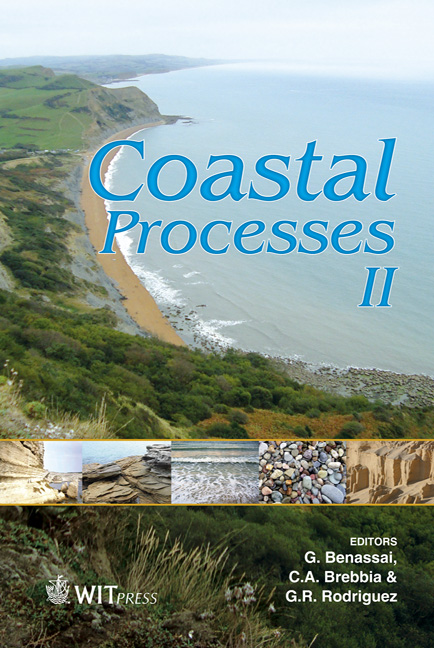Influence Of Seasonal Sea Ice Conditions On Hydrodynamic Processes And Oil Spill Drift
Price
Free (open access)
Transaction
Volume
149
Pages
12
Page Range
309 - 320
Published
2011
Size
865 kb
Paper DOI
10.2495/CP110261
Copyright
WIT Press
Author(s)
R. Aps & Ü. Suursaar
Abstract
Over the last hundred years, the annual maximum ice extent in the Baltic Sea has varied between 12 and 100% of the surface area of the sea, and the number of days with ice has fluctuated between zero and about 160 along the Estonian coast of the Gulf of Finland. Apparently, variations in ice conditions have a strong and diverse influence on hydrodynamic processes. The aim of the paper is to analyse the influence of sea ice on the waves, currents and coastal processes. Ice conditions are also closely related to the issues of shipping safety and pollution spread in oil spills. The study is based on meteorological and ice data gathered by the EMHI, measurements of waves and currents using the RDCP complex, and wave hindcasts. The hydrodynamic observations performed in the mouth section of the Gulf of Finland in winter 2009/10 showed somewhat weaker currents during ice cover, but the density-driven estuarine circulation was still rather efficient. The waves were absent when the whole gulf (measuring site) froze over, but when the sea was only partially covered with ice, the waves just decreased as a result of decreased fetches from certain wind directions. In addition to the solely meteorologically forced wave hindcasts, versions of the calculations with \“ice mask” were produced for the period of 1966–2008. The ice correction considerably influenced the trend of annual mean ice statistics. Detecting, tracking and combating of oil spills are more difficult in ice conditions. Keywords: sea ice, currents, wave modelling, oil spill, Baltic Sea. 1 Introduction In the Baltic Sea, icy conditions vary greatly within the seasonal cycle as well as interannually [1]. Over the last hundred years, the annual maximum ice extent
Keywords
sea ice, currents, wave modelling, oil spill, Baltic Sea





